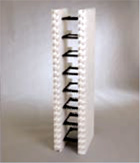 On 12 January 2010, a 7.0 magnitude earthquake rocked the island nation of Haiti. Haiti has a long history of severe earthquakes, but none could compare to the death and decimation of this one. Now, two years after the devastating quake, rebuilding efforts are focusing on renewable energy and green building techniques.
On 12 January 2010, a 7.0 magnitude earthquake rocked the island nation of Haiti. Haiti has a long history of severe earthquakes, but none could compare to the death and decimation of this one. Now, two years after the devastating quake, rebuilding efforts are focusing on renewable energy and green building techniques.
Slow recovery
By the end of 2010, international donations to Haiti created a fund so big, that each displaced individual could get a check for $37, 000. However, much of the Haitian aid money remains unspent. The biggest problem is property rights. Before the earthquake, 80% of Haitians did not own the home they lived in, but exactly who did was a hotly disputed topic.
Today over 550 000 Haitians remain homeless, stuck in temporary shelters without garbage collection or sewage systems while cholera continues to ravage the communities exposed to pollution and waste. Although progress is painfully slow, efforts are currently underway to remedy the situation.
UNICEF has a more positive outlook for the coming year; “The outlook at the start of 2012 appears bright. Positive progress in the public sector is matched by optimistic forecasts for private sector investment, bringing a much needed boost to the local economy.” The Red Cross has made the most progress. In 2011, they built homes for 36,270 Haitians; bringing the total number of people they’ve provided homes for to 100,000.
How does one make a building earthquake proof?
 Haiti is regularly subjected to earthquakes as well as inclement weather. Rebuilding homes, school and hospitals requires solid building construction methods. Structures able to withstand earthquakes, strong winds and flooding will help to protect lives and properties in the future. Wherever possible, most structures are being constructed from ICF blocks to make them earthquake resistant. ICF blocks are rebar-reinforced and filled with concrete. The ability of an ICF structure to withstand earthquakes is dependent on the way in which it is built. Structures can be built to any of the top three strengths: Seismic C, Seismic D1, or Seismic D2, with D2 being the highest standard in the International Building Code. ICF blocks have the added advantage of reducing the energy consumption of structures by up to 50%.
Haiti is regularly subjected to earthquakes as well as inclement weather. Rebuilding homes, school and hospitals requires solid building construction methods. Structures able to withstand earthquakes, strong winds and flooding will help to protect lives and properties in the future. Wherever possible, most structures are being constructed from ICF blocks to make them earthquake resistant. ICF blocks are rebar-reinforced and filled with concrete. The ability of an ICF structure to withstand earthquakes is dependent on the way in which it is built. Structures can be built to any of the top three strengths: Seismic C, Seismic D1, or Seismic D2, with D2 being the highest standard in the International Building Code. ICF blocks have the added advantage of reducing the energy consumption of structures by up to 50%.
Let the Sunshine in
While energy may not be in abundance in Haiti, sunshine certainly is. Now the Solar Energy Light Fund (SELF) plans to bring power to the people of Haiti with solar power installations. SELF has received help from some unusual quarters, Grammy-winning reggae outfit, Steel Pulse, has donated profits generated from their latest single, HoldOn4Haiti to SELF. Larry Hagman, who ironically played oil magnate J.R. Ewing in the TV drama ‘Dallas’, has also thrown his weight behind the project, utilizing the Solar2World organization to donate solar panels to SELF who use them to power clinics.
Not only does SELF’s tireless work benefit clinic patients, it often has some unexpected benefits; “Within minutes of the first lights coming on, our project director saw a small boy standing underneath them, reading a book!” Bob Freling, Executive Director of SELF.
It’s not just Haitians who fear earthquakes; each year, over 500 000 earthquakes occur worldwide with 100 000 causing damage and loss of life. Building earthquake-proof homes, hospitals, schools and businesses will help Haiti recover and save them from a similar fate in the future.